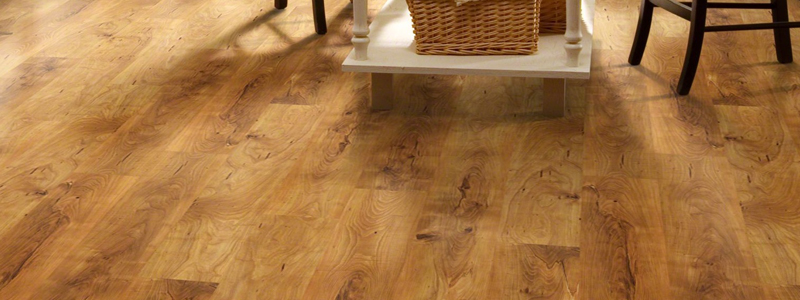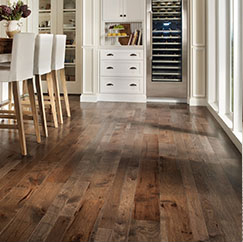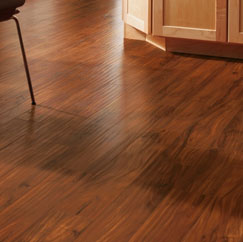 Laminate flooring provides durability, affordability and easy maintenance. This flooring type is a multi-layer synthetic flooring product fused together with a lamination process.
Laminate flooring provides durability, affordability and easy maintenance. This flooring type is a multi-layer synthetic flooring product fused together with a lamination process.
Get inspired! Use our room visualizer (icon on bottom right) to see today’s innovative flooring products in your home.


Laminate flooring simulates wood, tile, and stone with a photographic image layer under a clear protective layer.
Compared to porcelain tile, it offers an elegant look, without the worry; a warmer, softer feel underfoot; and easier maintenance and grout free installation.
Compared to hardwood, it offers the natural look of wood without the maintenance; up to 5x more scratch resistance; and a budget-friendly price.
Laminate flooring lets you design a beautiful look that emulates the elegance of tile or the warmth of hardwood. And waterproof options are now available.
Come visit our Lakewood Ranch or Sarasota showroom to see all of today's best options or call us to schedule your free flooring estimate and shop at home!




Call Today for Your Free Estimate!
Frequently Asked Questions (FAQs)
- AC1 is suitable for lighter, more infrequent traffic, e.g. a bedroom.
- AC2 is suitable for general residential use in living rooms and dining rooms.
- AC3 can be applied to more varied locations, such as small offices and other light commercial locations.
- AC4 can be installed in higher traffic commercial areas such as boutiques, busier offices, and restaurants.
- AC5 is more durable still and can withstand the traffic of heavier commercial areas such as department stores and public buildings.
Maintenance
- A damp cloth or mop can be used without damage to the laminate flooring panels, but do not use excessive water. Dry the floor thoroughly with a clean, soft cloth.
- Blot up spills or water from wet feet or footwear immediately with a clean, dry cloth, sponge, or paper towel. Do not allow excess liquid to remain on the surface of your laminate floor.
- Do not use soap-based detergents, abrasive cleaners, or combined “clean and shine” products on your laminate floor.
- Do not use steel wool or other scouring pads that may scratch laminate panels.
- Do not wax or polish your laminate flooring.
- Do not steam clean or use chemicals that may damage the laminate flooring surface.
- Place a doormat outside the exterior entrances to collect excess moisture, sand, grit and other potentially damaging substances from being tracked onto your laminate floor.
- Use only colorfast and non-scratch carpeting or pads on your laminate surface.
- Avoid sharp or pointed objects with concentrated weight such as high heels on your laminate flooring.
- Use protective felt pads under furniture legs or wide castors under appliance levelers.
- Do not slide furniture or appliances across your laminate floor.
- If using a wheeled dolly to move furniture or appliances, place a clean sheet of smooth plywood or other protective layer over your laminate surface.
- Rearrange furniture occasionally for increased indentation resistance
- Do not treat or seal your laminate floor panels after they are installed.
- Never sand, lacquer, or refinish your laminate flooring surfaces.

 NO TARIFF INVENTORY SALE!
NO TARIFF INVENTORY SALE!